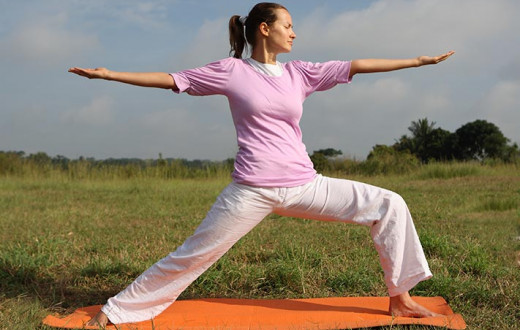More than a mere system of treating illness, Ayurveda is considered a science of life. From the Sanskrit words “Ayur” for life, and “Veda” meaning science or knowledge, Ayurveda offers a sense of wisdom that can help people cultivate vitality and optimal potential.
This practice can be used in our everyday lives to provide a spiritual blueprint for ideal daily and seasonal activities: diet, senses, behaviors, thoughts, setbacks, sleeping and energy. Ayurveda reminds us that true health is a balanced and vibrant integration between the physical environment, outer body, inner mind and human spirit.
Ayurveda is not something outside our daily routine. Rather, it is a science of life that raises the quality of every aspect of our life. Here we will review eight ways Ayurveda can integrate into your schedule and bring greater balance into your life.
1. How We Rest
Regardless of your Ayurvedic type, a few minutes of sitting quietly with yourself and turning inward through meditation helps clear the mind and rejuvenate the body. For balancing the system on a regular basis and providing deep rest, meditation is a key part of the Ayurveda toolkit.
2. How We Yoga
Ayurveda can inform your yoga practice. Some more vigorous yoga may be great for heavier people with a kapha nature to rejuvenate them; lighter people with a vata nature may enjoy a grounding approach, holding each posture longer; pitta people can use yoga to find deep rest by complementing active postures with long rest and meditation afterwards. Once you know your nature according to Ayurveda, you can use this knowledge to enliven your yoga practice and support your individual type.
3. How We Eat
Once we know our nature, we can use that knowledge to emphasize certain types of foods. Given that our nature reacts well to certain foods and gets irritated by others, you can plan a restorative diet, which uses knowledge about your type, any imbalances and the seasons to renew your level of balance. Also, plan on incorporating the 6 tastes into your meals in order to feel more satisfied.
4. How We Plan
Plan to rest. Like the strings of a bow that we pull back farther to generate momentum for shooting long distances, good rest will allow you to be more dynamically active. So plan a little time to rest, especially if you tend to just forge ahead from one task to another or if anxiety troubles you. You can use the knowledge of your nature to plan:
a. how much sleep you need at night,
b. whether a mid-day nap could help you to be more productive (not for kapha types), and
c. what sleep times will give you the most rest (hint: it’s not after midnight).
5. How We Design Our Environment
Do you prefer soothing, calming colors? Or would you rather add bold, vibrant colors to your surroundings? Scent could also play a role in how you decorate a space to balance your mind and suit your nature. Similarly, all five senses can be stimulated in a way that either rejuvenates, relaxes or grounds you.
6. How We Exercise
Regular exercise benefits every body type, keeping us strong and healthy. But the type of exercise should also depend on the type of person. Pitta types generally need steady, moderate exercise; kapha types require challenging exercise that requires more endurance; and vata types can enjoy light exercise in moderation.
7. How We Practice Compassion
When we know that someone has a certain nature, we can look past small events and conflicts. We can see that certain imbalances — too much fire, too much heaviness — can results in certain reactions (or lack of action!). Understanding the three natures and the play of the five elements allows us to avoid getting stuck in personality conflicts, and instead see the bigger picture and view events as passing disturbances.
8. How We Restore
We realize our body is an instrument. Like a car that needs yearly maintenance, our body also benefits from a tune up now and again. We can incorporate regular digestive cleansing into our diet (the Ayurveda Detox Guide is available online and is a great way to cleanse and even balance your weight at home). We can take some time out to be with nature and in silence, restoring our senses.
Every so often, we can take time out for a Panchakarma program to nourish and restore our body through a synthesis of personal assessment, diet, yoga, meditation and treatments designed to restore us to balance.
Ayurveda is not something outside our daily routine.
Ayurveda is something that enhances life. It has so many practical applications for restoring harmony in our surroundings and our relationships. Ayurveda can affect they way we live life each day, bringing rejuvenation, energy, deep rest, calmness and clarity all within our reach. It does this using time-tested, all-natural tools that are as relevant now as they were 5,000 years ago.
This is the final post in our series introducing Ayurveda (hint: it started here with 8 Limbs of Ayurveda). If you want to pick up the whole series in one, easily digestible ebook, you can pick it up here: Ayurveda 101: Vibrant Health through the Science of Life.



















